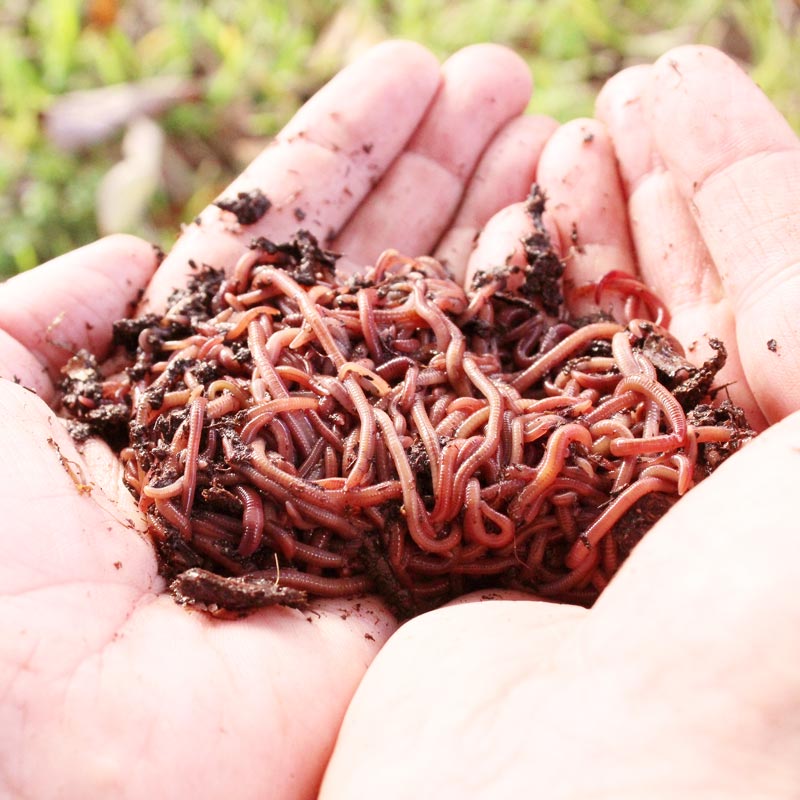Just How Red Wigglers Can Change Your Composting Experience
The combination of red wigglers right into composting practices provides a transformative strategy to throw away administration and soil enrichment. These microorganisms not only speed up the decay process but also produce nutrient-dense vermicompost that improves dirt health and wellness and fertility. Their versatility to numerous settings makes them an appropriate choice for both newbie and seasoned composters alike. Comprehending the details demands and advantages connected with preserving a thriving worm population is essential for optimizing their capacity. What techniques can one utilize to make certain a successful vermicomposting experience?
Benefits of Red Wigglers
Red wigglers, medically referred to as Eisenia fetida, are a cornerstone of reliable composting systems due to their remarkable ability to decompose raw material effectively. These worms succeed in transforming cooking area scraps, yard waste, and other natural products right into nutrient-rich compost, typically referred to as worm castings. Lake Hickory Bait. This process not just minimizes garbage dump waste yet also adds to lasting gardening methods
One of the primary advantages of red wigglers is their high recreation rate, enabling them to occupy a composting environment promptly. This quick multiplication boosts decomposition prices, causing faster garden compost manufacturing. Additionally, red wigglers thrive in a varied series of problems, making them adaptable to numerous composting setups.

Establishing Your Worm Bin
(Lake Rhodhiss Bait)To produce a reliable worm bin for composting, cautious interest needs to be provided to its style and atmosphere. A suitable worm bin must be created of materials that are sturdy yet permit required air flow, such as plastic or wood. The dimension of the bin can vary, yet a volume of about 1 square foot per extra pound of worms is a great starting point.
Make sure that the bin has drain holes to prevent water accumulation, which can result in anaerobic problems harmful to the worms. In addition, incorporating ventilation holes will help keep appropriate moisture degrees and oxygen flow.
Following, it is vital to supply bedding for the worms, which can include shredded paper, cardboard, or coconut coir. This bedding not only provides a habitat for the worms yet additionally help in wetness retention.
Position the worm bin in a location that keeps a temperature level variety of 55-77 ° F(13-25 ° C) to optimize worm activity. Avoid putting the bin in straight sunshine or severe temperatures. By complying with these standards, you can produce a helpful environment for red wigglers, boosting the efficiency of your composting process.
What to Feed Your Worms

(Charlotte NC Worms For Sale)Red wigglers particularly delight in soft, damp foods like watermelon skins, cucumber peels, and banana peels. It is critical to stay clear of feeding them citrus fruits, onions, and garlic, as these can be harmful to their wellness. Additionally, cooked foods, milk products, and meat needs to be purely prevented, as they can result in odors and bring in bugs.
Providing a constant feeding routine will certainly help keep your worm populace prospering while boosting the total performance of your composting initiatives. By recognizing what to feed your worms, you lay the groundwork for a successful and sustainable composting experience.
Preserving a Healthy Environment
Developing a flourishing composting atmosphere for red wigglers requires focus to their habitat, as it straight affects their health and efficiency. The ideal environment should keep a balanced moisture level, typically between 60-70%. Extreme moisture can cause anaerobic conditions, while inadequate moisture might dehydrate the worms.

The bed linen product in the compost should vary and shredded, incorporating products like cardboard, newspaper, and coconut coir. This not only provides a comfortable atmosphere however also acts as a food source. Lake Hickory Bait. Routinely looking for smells or signs of pests can help identify prospective problems before they intensify
Last but not least, maintaining a well balanced pH level, preferably between 6 and home 7, makes sure a favorable environment for red wigglers, cultivating their ability to procedure raw material properly. By addressing these factors, you can create a sustainable and effective composting community.
Harvesting and Making Use Of Garden Compost
Collecting garden compost from a worm container is a gratifying procedure that changes organic waste right into nutrient-rich material for yards and plants. As soon as the composting cycle is complete, normally after 8-12 weeks, it's time to collect the vermicompost. The initial step involves dividing the red wigglers from the finished garden compost. This can be done using techniques such as the "light" approach, where worms are brought in to light and can be scooped far from the top layers, or by relocating the garden compost to one side of the bin and including fresh bed linens to the opposite side, motivating the worms to migrate.
As soon as the worms are eliminated, the staying garden compost can be filtered to eliminate any bigger particles or undecomposed material. The last item needs to have a dark, crumbly appearance and an enjoyable earthy smell, suggesting that it is all set for usage. This abundant garden compost can be applied straight to yard beds, mixed into potting soil, or made use of as a leading clothing for potted plants. By integrating vermicompost right into your horticulture practices, you not only boost dirt fertility yet also promote healthy and balanced plant growth and sustainable horticulture techniques.
Verdict
Integrating red wigglers into composting methods substantially boosts the decomposition procedure and contributes to the manufacturing of nutrient-rich vermicompost. The resulting worm castings enhance soil framework, fertility, and microbial task, eventually promoting much healthier plant growth.